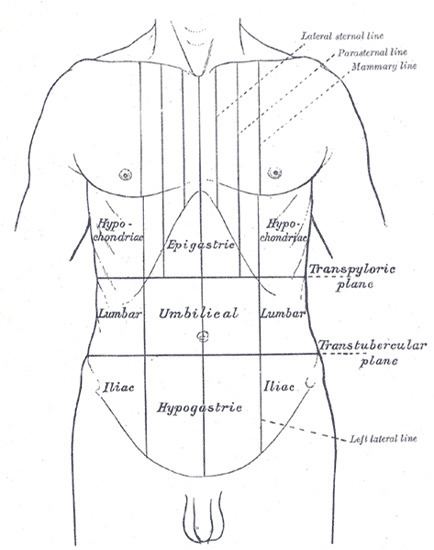Latin planum transpyloricum TA A01.2.00.007 | Dorlands/Elsevier p_22/12644663 FMA 14608 | |
 | ||
The Transpyloric plane, also known as Addison's Plane, is an upper transverse line, located halfway between the jugular notch and the upper border of the pubic symphysis. It is also said to lie roughly a hand's breadth beneath the xiphoid process of the human sternum. The plane in most cases cuts through the pylorus of the stomach, the tips of the ninth costal cartilages and the lower border of the first lumbar vertebra.
Structures crossed
The transpyloric plane is clinically notable because it passes through several important abdominal structures. These include:
References
Transpyloric plane Wikipedia(Text) CC BY-SA
